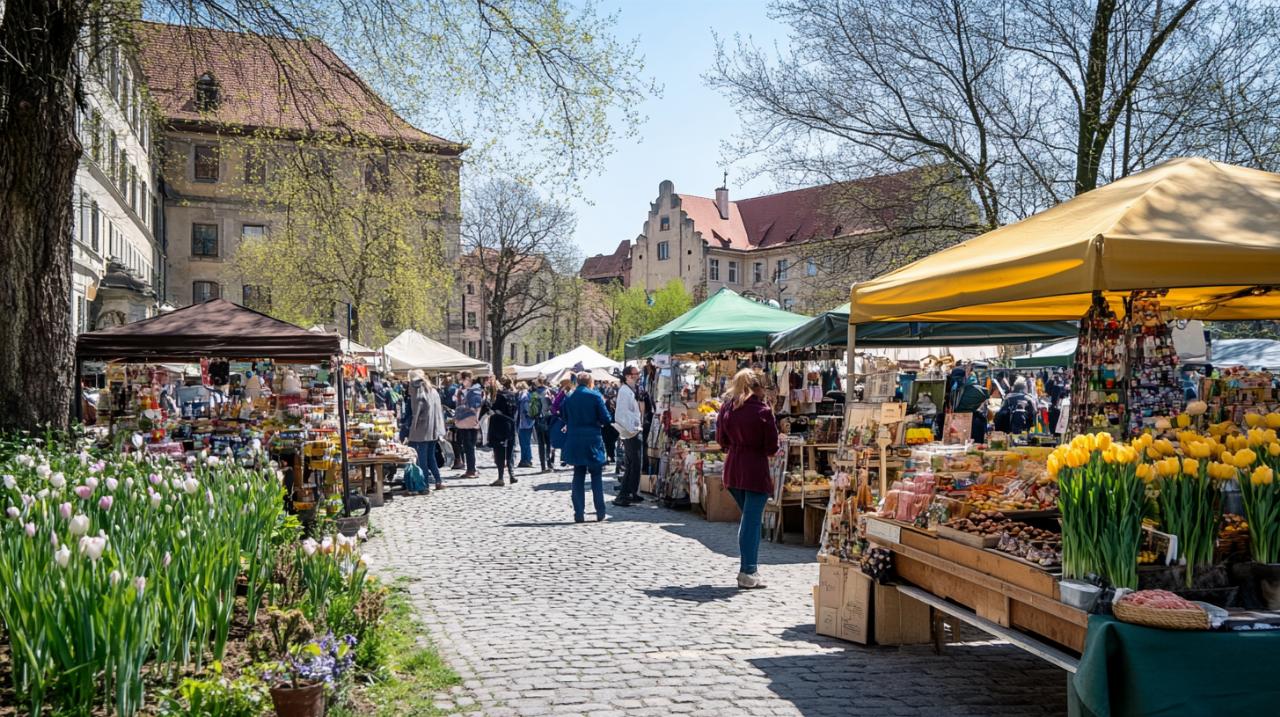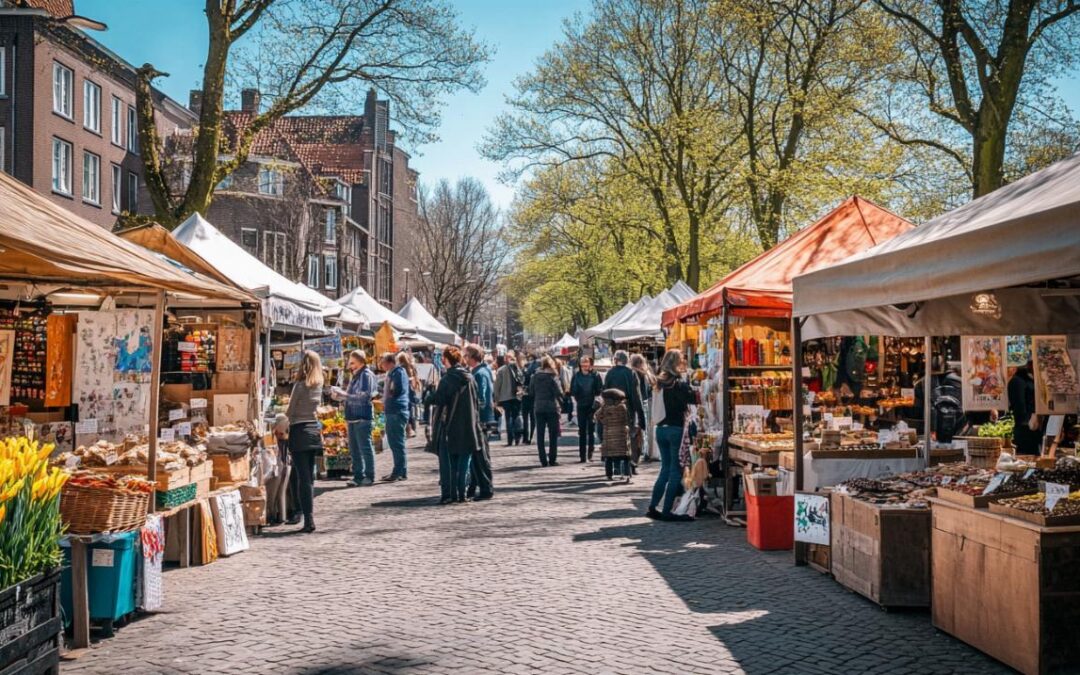As the chill of winter lifts and daylight stretches into longer, warmer evenings, Europe stirs to life with an abundance of festivals, markets, and cultural happenings. Travellers from across the globe find this season ideal for wandering cobblestone streets, sampling local delicacies, and witnessing centuries-old traditions performed against backdrops of historic architecture. Whether drawn by the scent of fresh pastries wafting through medieval squares or the vibrant hues of spring blooms framing open-air concerts, visitors discover that spring unlocks a side of the continent brimming with authenticity and charm.
Discovering europe's finest artisan markets this spring season
Spring across Europe brings a resurgence of outdoor commerce, where stallholders arrange their wares beneath canvas awnings and the air hums with animated chatter. These gatherings are far more than simple shopping excursions; they serve as living showcases of regional identity, where centuries of craftsmanship meet contemporary innovation. From the grand boulevards of Paris to the narrow alleys of Barcelona, markets offer a tactile connection to the character of each destination, inviting travellers to engage directly with the people who shape local culture.
Traditional craft markets across the continent
Across the continent, traditional craft markets serve as vital threads in the cultural fabric of their communities. Cities such as Paris and Marseille host sprawling flea markets and antique fairs where collectors and curious wanderers alike sift through vintage items and collectables, each piece bearing the patina of history. In Spain, medieval fairs capture the imagination, with events like the Bodas de Isabel de Segura in Teruel drawing visitors into a reimagined past. French fairs at Saint-Ouen present an astonishing array of antiques, while Marseille infuses its themed fairs with live music and food, transforming commerce into celebration. Ireland and Scotland contribute their own distinctive flavour, offering craft fairs rich with Celtic-inspired items and traditional music that echoes through bustling market squares. These gatherings do more than sell goods; they preserve and propagate artisan markets and cultural heritage that define European identity.
In the Basque region, Hondarribia in Gipuzkoa stages a medieval festival in June, where costumed performers and artisan vendors recreate the atmosphere of bygone eras. Similarly, international festivals throughout Europe often include workshops on traditional crafts, providing hands-on opportunities for visitors to learn age-old techniques from master artisans. Guided tours of markets in Barcelona and Madrid illuminate the stories behind local food and traditions, revealing how regional specialties have evolved over generations. Valencia houses Mercado Central, one of Europe's largest fresh produce markets, where the vibrant displays of fruit, vegetables, and seafood reflect the agricultural richness of the surrounding countryside. Traditional markets like these are invaluable for experiencing local culture firsthand, offering a sensory journey through flavour, texture, and craftsmanship that no guidebook can fully convey.
Seasonal spring offerings from local artisans
Spring awakens not only the landscape but also the creative output of Europe's artisans. As temperatures climb into comfortable ranges, cities such as Las Palmas and Valencia enjoy mild conditions that make outdoor browsing a pleasure, with spring temperatures ranging from eighteen to twenty-four degrees Celsius in the former and slightly cooler in the latter. These coastal regions become hubs of activity, where fresh produce markets overflow with seasonal harvests and craftspeople display textiles, ceramics, and jewellery that reflect both time-honoured methods and contemporary aesthetics. Barcelona's spring temperatures hover between fifteen and twenty degrees, providing an ideal climate for strolling through its many markets, while Madrid's slightly cooler range of twelve to twenty degrees does little to dampen the enthusiasm of vendors and shoppers alike.
Further north, Frankfurt and Hamburg offer their own unique market experiences, with spring temperatures spanning ten to eighteen degrees and eight to sixteen degrees respectively. Brussels, with its temperate climate of ten to eighteen degrees, becomes a focal point for those seeking Belgian crafts and culinary delights. Each destination presents a distinct character shaped by geography, history, and local tradition. In addition to physical goods, many markets host live music and theatre performances, often staged in historical buildings and parks, particularly in April. Barcelona, Madrid, and Valencia blend classic and modern events, while cities like Zaragoza and Seville feature jazz and rock concerts held in palaces, merging the grandeur of the past with the energy of the present. Cultural clubs and theatres in Madrid and Barcelona stage plays and dance shows, further enriching the cultural landscape.
Immersing yourself in europe's rich cultural heritage
Spring and autumn are widely regarded as ideal seasons for delving into Europe's art and history, as the moderate weather encourages extended exploration and the calendar brims with cultural events. This period sees a profusion of concerts, guided tours, and exhibitions that illuminate the continent's layered past and vibrant present. Museums mount temporary exhibits on Spanish crafts, while parks and gardens host cultural and festive events that draw locals and visitors into shared celebration. Guided tours provide invaluable context, helping people understand the nuances of local art, history, and culture, and transforming casual sightseeing into meaningful engagement.

Historical sites and living traditions worth visiting
Europe's historical sites are not static relics but living spaces where tradition and modernity coexist. Guided tours of markets and monuments in major cities reveal how architectural marvels and everyday commerce have shaped urban life over centuries. In Barcelona, Gothic quarters stand beside modernist masterpieces, while Madrid's grand boulevards lead to intimate plazas where traditional crafts are still practised. Valencia's Mercado Central is not only a feast for the senses but also a monument to early twentieth-century architecture, its soaring ironwork and colourful tilework embodying the spirit of Modernisme. These sites invite visitors to step beyond the surface and appreciate the intricate connections between place, people, and heritage.
In the south of France, the Cannes Film Festival from the thirteenth to the twenty-fourth of May transforms the Riviera into a global stage, yet the surrounding towns retain their Provençal charm, with craft markets and antique fairs continuing their rhythms. Venice, hosting the Venice Biennale from the tenth of May to the twenty-third of November, becomes a canvas for contemporary art, while its own traditional craft of glassblowing remains a draw for those seeking authentic Venetian pieces. Verona's Opera Festival, running from June through September, offers performances in an ancient Roman amphitheatre, creating an unforgettable fusion of classical music and historical ambience. Each of these events and sites reinforces the idea that Europe's cultural heritage is not a museum exhibit but a living, breathing part of daily life.
Spring festivals celebrating european culture
Spring festivals dot the European calendar, each one a reflection of local identity and communal pride. The Carnival of Venice, held from the twenty-second of February to the fourth of March, enchants with its elaborate masks and costumes, while Vinterjazz in Copenhagen, running from the thirtieth of January to the twenty-third of February, fills the city with the sounds of improvisation and melody. Saint Patrick's Day on the seventeenth of March sees Ireland awash in green, with parades, music, and dance celebrating Celtic heritage. Keukenhof, from the twentieth of March to the eleventh of May, showcases seven million tulips, daffodils, and hyacinths across a seventy-nine-acre park, drawing garden enthusiasts from around the world.
King's Day on the twenty-seventh of April in Amsterdam attracts between six hundred thousand and one million people, transforming the city into a vast street party where vendors, musicians, and revellers fill every canal-side path. The Chelsea Flower Show, held from the twentieth to the twenty-fourth of May in London, remains a pinnacle event for horticulturists and garden designers, while the Fiesta de San Isidro on the fifteenth of May in Madrid honours the city's patron saint with processions, concerts, and traditional dances. Ultra Europe in Split, from the eleventh to the thirteenth of July, and Sanfermines in Pamplona, from the sixth to the fourteenth of July, attract more than a million visitors each, blending music, sport, and cultural tradition. Oktoberfest in Munich, from the twentieth of September to the fifth of October, famously draws five point nine million guests who consume seven point seven million litres of beer, yet its roots lie in Bavarian tradition and communal celebration.
Gardens and squares across Europe host poetry readings, film screenings, and local markets, creating informal cultural hubs where the boundaries between performer and audience blur. International workshops on traditional crafts allow participants to learn techniques passed down through generations, from pottery and weaving to leatherwork and metalsmithing. The Mille Miglia from the seventeenth to the twenty-first of June in Italy is both a vintage car rally and a celebration of Italian engineering and design, while the Feast of San Ranieri on the sixteenth and seventeenth of June in Pisa honours the city's patron with processions and regattas. Marchas Populares on the twelfth of June in Portugal sees neighbourhoods compete in parades featuring colourful costumes and traditional music, and Luxembourg National Day on the twenty-third of June combines military parades with fireworks and public festivities.
Lyon's Nuits de Fourvière in June and July stages theatre, dance, and music performances in a Roman amphitheatre, while parks throughout Barcelona, Madrid, and Valencia host open-air concerts and dance shows that blend classical and contemporary styles. These festivals and events, whether grand or intimate, underscore the continent's commitment to preserving and celebrating its cultural heritage while remaining open to innovation and exchange. For travellers seeking to immerse themselves in Europe's rich tapestry, spring offers an unparalleled opportunity to witness traditions in full bloom, to engage with artisans and performers, and to carry home memories that transcend the purely visual, resonating instead with the rhythms, flavours, and stories that define this remarkable continent.

